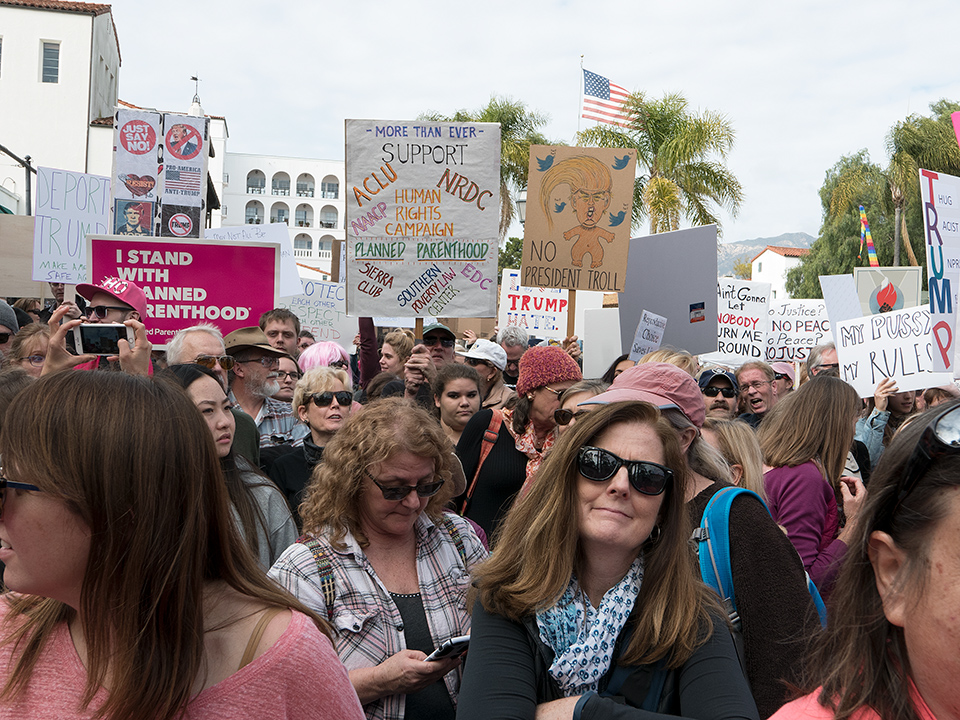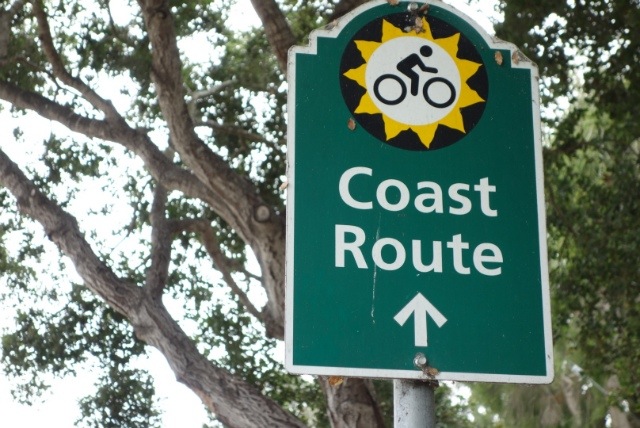He was riding his bike down State Street, in front of the Museum of Art…
PWPB Day 2
Day 2 of the Pro Walk/Pro Bike/Pro Place conference is coming to a close. As usual, I started the day with a sunrise bike ride around Long Beach; this morning led by the maestro himself, Charlie Gandy.

Everyone enjoys a ride along the beach
Charlie tells stories as he educates
I always learn something new from any time spent with Charlie. This morning I learned the difference betweek Portland and Seattle roundabouts. Long Beach installed several Portland-style roundabouts in Belmont Heights. They’re distinguished by their smaller size and rely on parked cars on the approaching roads to force vehicles to slow as they navigate the roundabout. Seattle-style roundabouts have a larger radius, about 5′ larger, which forces vehicles to slow even more dramatically to negotiate the roundabout. This larger radius requires moving crosswalks further away from the intersection. Charlie was quick to agree with one rider; the Seattle-style is more effective in traffic calming. Nonetheless, the Long Beach implementation, funded in large part by Safe Routes to Schools grants, is loved by the local residents for their traffic calming features. More kids are walking and biking to school, just as the traffic engineers knew they would.
The conference kicks into high gear around 10am as the breakout sessions commence; there are 10 breakouts competing for my attention at any one time. I had to make some tough choices, but after lunch I knew exactly where I wanted to be, at the ‘Best Practices of Bike Sharing Systems’; I chose wisely. Newport Beach is hosting 3 bike share companies on Monday Sept 17th at the Central Library; this special meeting of the Bike Safety Committee will listen to the sales pitches and determine whether more formal proposals should follow. Today’s session was a great warm-up for me; I feel up on my learning curve after listening to Denver’s and Miami’s vendors describe how their systems work. Both sound like solid, if barely profitable, bike share systems. Both described how the majority of their bike riders are annual members, yet significant revenue is earned from ‘walk-ups’, tourists in town for just a day or so. The Walk-ups are less time and price sensitive, whereas annual users know that if they return their bike within 30 minutes there’s no additional fee. Tourists either don’t know the strict time limits or don’t care as the bike share is so much cheaper than renting a car and paying to park it.
The South Beach installation services customers in the 25-55 age range, not the more youthful group they originally envisioned.
How does the business community feel about bike share? One interesting point: they can’t tell who comes by bike share — since a bike share station might be half way up the block, the user of the bike share looks like any pedestrian, or someone walking in from the parking lot, as they enter the store. In particular, several bike rental stores were cool to the systems at first, but later learned that many users start with the bike share system to get to the bike rental store, so they can have a bike for multiple days, for example.
The biggest beneficiaries of bike share systems are sit-down restaurants; short distance commuters, coffee shops, grocery stores and bars all benefit as well.
Why all this interest in bike share systems in the first place?
Jennifer Toole of the Toole Design Group says that a bike share system is “the most efficient, cost effective mode of transportation” — that’s why.

The proprietor of the free bike valet told me:
Yes, you can tell a lot about the rider based on their bike


